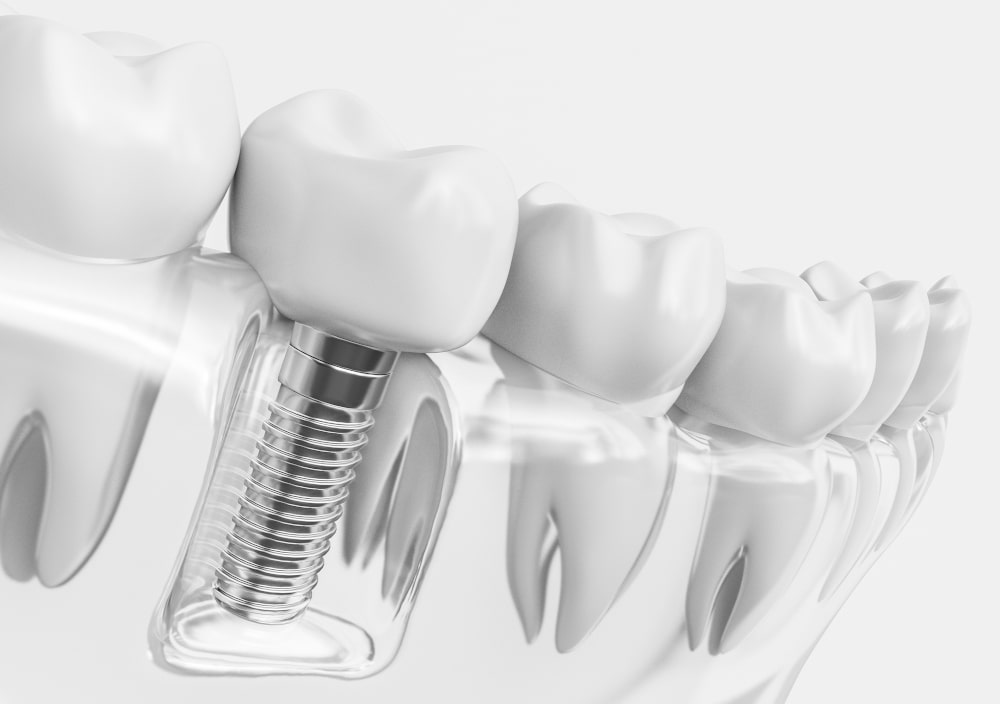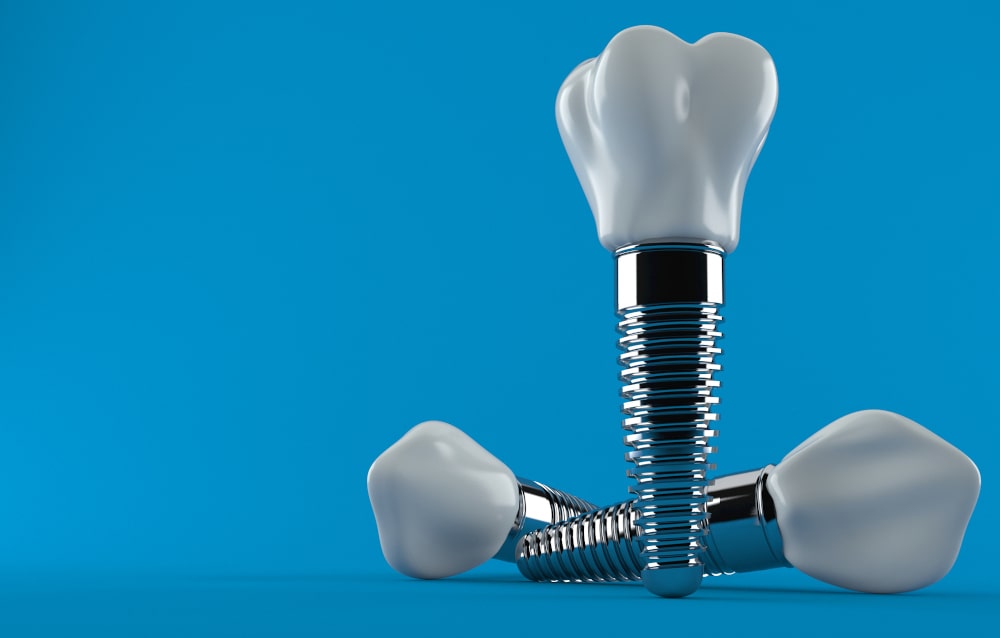
Key Takeaways
- After a tooth extraction, the body enters a natural healing process involving clot formation and tissue regeneration.
- Same-day dental implants, also known as immediate implants, can be placed immediately after extraction, provided specific criteria are met.
- Benefits of immediate implants include faster recovery and fewer appointments, but they come with higher surgical precision requirements and risks like infection or implant failure.
- Professional assessment and surgical experience are essential to success.
What happens immediately after a tooth is extracted?
Once a tooth is removed, the process is over. In reality, it’s only the beginning. The body initiates a finely tuned healing process that unfolds in several stages, beginning within minutes after extraction.
Stage 1: Blood Clot Formation
As soon as the tooth is pulled, a blood clot forms in the socket. This isn’t just a random pool of blood — it's the protective layer that allows tissue and bone to regenerate. The clot prevents bacteria from entering and helps avoid a painful condition called dry socket.
Any disruption — such as smoking, vigorous rinsing, or sucking through a straw — can dislodge this clot. According to the Canadian Dental Association, preserving this clot is the number one priority for immediate post-extraction care.
Stage 2: Inflammation and Tissue Regeneration
Over the next 24–48 hours, the extraction site becomes inflamed. That’s normal. The area may swell and feel tender as white blood cells flood in to remove bacteria and debris. This stage lays the foundation for new soft tissue to grow.
Initial care tips during this phase:
- Apply cold packs externally in 15-minute intervals
- Stick to soft foods and avoid hot beverages.
- Take prescribed medications or over-the-counter pain relief as directed.
- Sleep with your head elevated to reduce swelling.
Stage 3: Bone Resorption Risk
Here’s something not everyone realizes: within 7–10 days, the body starts absorbing the jawbone where the tooth used to be. This process is known as bone resorption. Without a root or implant to stimulate it, bone density diminishes over time. This can cause a visible change in facial structure and complicate future implant placement.
This is why many dentists advocate for early implant consideration or socket preservation techniques if an implant isn’t immediately viable.
Timeline of Early Healing
| Day | What Happens |
|---|---|
| 0 | Tooth extraction, blood clot formation |
| 1–3 | Inflammation, mild swelling, and tenderness |
| 4–7 | Tissue growth begins, swelling subsides |
| 7–14 | Bone begins resorption if no stimulation present |
The takeaway? Early intervention matters. The first two weeks post-extraction are crucial not only for healing but for long-term treatment planning.
Can I get a dental implant the same day as extraction?
Yes — but with conditions. This process is known as an immediate dental implant, and while it sounds convenient (and often is), it requires strict adherence to surgical protocols and careful patient selection.
What Are Immediate Dental Implants?
An immediate dental implant is placed into the socket right after the tooth is removed. Unlike traditional implants, which require a healing period of several weeks or months, immediate implants aim to combine both procedures into one surgical event.
When Is It Viable?
Immediate implants are most successful when:
- The patient has good overall health and strong immune function
- There is no active infection in the extraction site.
- The surrounding bone is intact and healthy.
- There is enough bone volume to secure the implant without additional grafting.
- The patient is a non-smoker or is willing to abstain during healing.
In short, not every case qualifies. As Dr. Amir Guorgui BSC, DMD, MACSD explains:
"Same-day implants can be incredibly effective, but only in the right scenario. Trying to force an implant into a compromised site is asking for trouble."
Surgical Protocol and Expertise
Immediate implants require a dentist skilled in:
- Atraumatic extraction techniques
- Bone grafting, when necessary
- Flapless or minimal incision approaches
Criteria for Same-Day Implants
| Criterion | Required Conditions |
|---|---|
| Infection | Absent or fully treated |
| Bone density | Moderate to high, no significant loss |
| Gum health | Stable and non-inflamed |
| Smoking | Strongly discouraged |
| Age | Adults with complete jaw growth |
When all boxes are checked, same-day implants can significantly reduce treatment time and eliminate the need for multiple surgical visits.

What are the benefits and risks of same-day dental implants?
Immediate gratification is tempting — and in many cases, justified. But when it comes to same-day implants, benefits and risks must be weighed carefully.
Benefits of Immediate Implants
- Time Efficiency: One surgery instead of two means faster overall treatment.
- Fewer Appointments: Ideal for busy professionals or those with travel limitations.
- Preservation of Bone and Gum Tissue: Placing the implant immediately reduces bone resorption.
- Improved Aesthetics: Immediate provisional crowns can maintain a natural appearance during the healing process.
Risks and Complications
- Implant Failure: The implant may not properly fuse to the bone if placed in an unstable socket.
- Infection: Any residual bacteria from the extracted tooth can lead to peri-implantitis.
- Micromovement: Excessive motion during healing can prevent proper osseointegration.
- Bone Loss: Without bone grafting or proper stabilization, bone may recede over time.
Dr. Eisen notes:
"Dental implant treatment requires a high level of precision. From accurate implant placement to attentive post-operative care, every step must be carefully managed to ensure long-term success."
Immediate vs. Delayed Implants
| Factor | Immediate Implant | Delayed Implant |
|---|---|---|
| Treatment time | Shorter (same day) | Longer (3–6 months post-extraction) |
| Surgery sessions | 1 | 2 or more |
| Bone preservation | Higher | Depends on grafting |
| Risk of failure | Slightly higher | Lower with full healing |
| Aesthetic results | Better in ideal cases | May need more cosmetic work |
| Cost | Comparable, sometimes lower | Can increase with grafting |
Ultimately, patient-specific factors and the practitioner's skill determine whether same-day implants are a suitable option.
How does the tooth extraction and implant timeline vary by patient case?
No two patients heal the same — and that’s not just a figure of speech. Variables like age, systemic health, bone density, and lifestyle habits all influence how quickly you’ll recover from an extraction and how soon an implant can be placed.
Age-Related Differences
Younger patients, especially those under 35, tend to experience faster healing and better bone regeneration. This is due mainly to:
- Higher metabolic rate
- Greater bone cell activity
- Stronger immune response
Older adults, on the other hand, may require more healing time and could face complications like slower clot formation or pre-existing bone loss.
Role of Oral and Systemic Health
Patients with chronic health issues — such as diabetes, autoimmune conditions, or gum disease — may need extended timelines. These conditions:
- Reduce circulation to oral tissues
- Delay immune responses
- Increase the risk of post-op infection.
As reported in the article "Healing Potential of Diabetic Patients After Dental Implants" from the Journal of Oral Health, even well-controlled diabetic patients showed slightly prolonged recovery phases.
Bone Density Considerations
Implant placement relies heavily on the quality of bone available. A patient with dense, well-mineralized jawbone is likely a good candidate for same-day placement.
But if bone volume is compromised due to:
- Long-term tooth absence
- Advanced gum disease
- Osteoporosis
Smoking and Healing
Smoking remains one of the top risk factors for delayed healing and implant failure. According to user forums on sites like DentalTown, both patients and clinicians have observed:
- Increased rates of dry socket
- Poor gum attachment to implants
- Elevated implant loss within the first six months
Summary of Timeline Variables
| Factor | Immediate Implant Likely? | Healing Timeline Impact |
|---|---|---|
| Young age (<35) | Yes | Speeds up recovery |
| Diabetes (controlled) | Sometimes | May delay soft tissue healing |
| Low bone density | No | May need bone graft, 4–6 month delay |
| Smoking | No | Significantly delays healing |
What is the process for one-day dental implants?
Same-day dental implants may sound too good to be true, but they’re well within the scope of modern dentistry. That said, the process involves multiple steps — all packed into a tight timeline that demands clinical precision.
Step-by-Step Timeline
- Initial Consultation
- 3D imaging (CBCT scan)
- Medical and dental history review
- Evaluation of bone density and soft tissue
- Treatment Planning
- Digital modelling of the implant placement
- Temporary crown design (if required)
- Surgical planning and sedation decision
- Day of Surgery
- Atraumatic tooth extraction
- Socket cleaning and possible bone grafting
- Implant placement using torque-controlled systems
- Temporary crown secured (when stability is adequate)
- Post-Surgery Protocol
- Prescription medication provided
- Soft food diet and oral hygiene instructions
- Follow-up appointment scheduled within 7–10 days
Sedation and Comfort Options
Patients often worry about pain — understandably. Fortunately, North York Smile Centre offers multiple comfort options:
- Oral Sedation: For mild to moderate anxiety
- IV Sedation: For surgical procedures with multiple implants
- Local Anesthesia: Always used for the implant site
Quick Specification Table
| Stage | Timeframe | Tools or Techniques |
|---|---|---|
| Consult | 1 day | CBCT, digital scan |
| Planning | 1–2 days | 3D modeling, treatment software |
| Surgery | 1–2 hours | Torque driver, implant system |
| Crown placement | Same day | Temp prosthesis |
Efficiency doesn’t mean rushed. Every stage is calculated, measured, and customized for the individual patient.

What should patients expect during recovery from same-day implants?
You walk out with a new tooth — but that doesn’t mean you're fully healed. Recovery from same-day implants still requires diligence, rest, and proper aftercare.
Immediate Aftereffects
In the first 24–72 hours, patients may experience:
- Mild to moderate pain or throbbing
- Swelling in the jaw or cheeks
- Slight bruising
- Bleeding at the gumline (should subside in a few hours)
Pain is typically manageable with over-the-counter meds like ibuprofen or dentist-prescribed analgesics.
Eating and Activity Restrictions
Patients are advised to:
- Stick to soft, non-crunchy foods for the first week (e.g., oatmeal, scrambled eggs)
- Avoid hot drinks for 48 hours.
- Chew on the opposite side of the implant.
- Avoid strenuous activity for at least 5 days.
Ongoing Healing
It takes 3–6 months for the implant to fully integrate with the bone (osseointegration). During this period, patients may:
- Transition to a permanent crown after 8–12 weeks
- Return to normal eating within 4–6 weeks.
- Require periodic checkups to assess stability.
Red Flags to Watch For
Call your dentist immediately if you notice:
- Persistent bleeding beyond 24 hours
- Throbbing pain that worsens over time
- Signs of infection (pus, fever, foul taste)
- Mobility or shifting of the implant
Recovery doesn’t end with pain relief. Long-term success depends on your commitment to oral hygiene, regular follow-ups, and lifestyle choices.
What factors determine if you're eligible for immediate implants?
Not everyone qualifies for same-day dental implants — and that’s a good thing. This approach offers powerful benefits, but it’s only safe when specific biological and health-based criteria are met.
Core Eligibility Criteria
- Gum Health
Healthy, disease-free gums are essential. Active periodontitis can compromise implant stability and increase infection risk. - Bone Density and Volume
Adequate bone in both height and thickness is crucial for securely anchoring the implant. If the socket is too wide or lacks cortical bone, a delayed approach may be safer. - Infection Control
The presence of abscesses, cysts, or significant periodontal infection at the site generally rules out immediate placement. However, some localized diseases can be treated during surgery if carefully managed. - Systemic Health
Patients with uncontrolled diabetes, autoimmune disorders, or those undergoing immunosuppressive therapy may not heal adequately for an implant to succeed.
Other Considerations
- Smoking: Strongly discouraged; impairs healing and osseointegration
- Age: Mature jawbone required (usually age 18+)
- Medications: Bisphosphonates, corticosteroids, and chemotherapy can complicate healing
If one or more of the criteria aren’t met, that doesn’t mean implants are off the table — only that a staged approach is safer.

How does North York Smile Centre perform same-day dental implants?
While many clinics offer same-day implants, North York Smile Centre distinguishes itself through advanced technology, highly skilled surgeons, and a tightly coordinated process.
Technology That Sets Them Apart
North York Smile Centre uses:
- Cone Beam CT Imaging (CBCT) for precision planning
- Digital implant planning software for angle and depth accuracy
- Surgical guides based on your unique anatomy
- Immediate-load implant systems are designed for optimal stability
This tech minimizes guesswork and maximizes predictability. According to their same-day implants page, procedures are customized in real time based on intraoperative feedback.
Step-by-Step Process
- Initial Consultation
- Includes digital scans, medical review, and diagnostic impressions
- Surgical Planning
- Advanced modelling to simulate implant location
- Surgery Day
- Tooth removal and implant placement in one visit
- Temporary crown attached if stability allows
- Follow-up and Finalization
- Healing monitored for 8–12 weeks
- Permanent crown placement
It’s not a cookie-cutter system. Every treatment is tailored, and full-spectrum diagnostics backs every implant placed.
Is a same-day dental implant right for you?
After everything we’ve covered — from healing biology to cutting-edge surgical techniques — one thing is clear: same-day dental implants are powerful, but not universal.
Summary Comparison Table
| Factor | Same-Day Implant | Delayed Implant |
|---|---|---|
| Time to the final tooth | 1 day to 3 months | 4–9 months |
| Surgeries required | 1 | 2 or more |
| Bone preservation | Higher | May need grafting |
| Healing time | Faster overall | Slower overall |
| Cost | Often comparable | May increase with grafting |
| Risk level | Higher in non-ideal cases | Lower if fully healed |
Sources Used
- Canadian Dental Association
- Journal of Clinical Implant Dentistry


